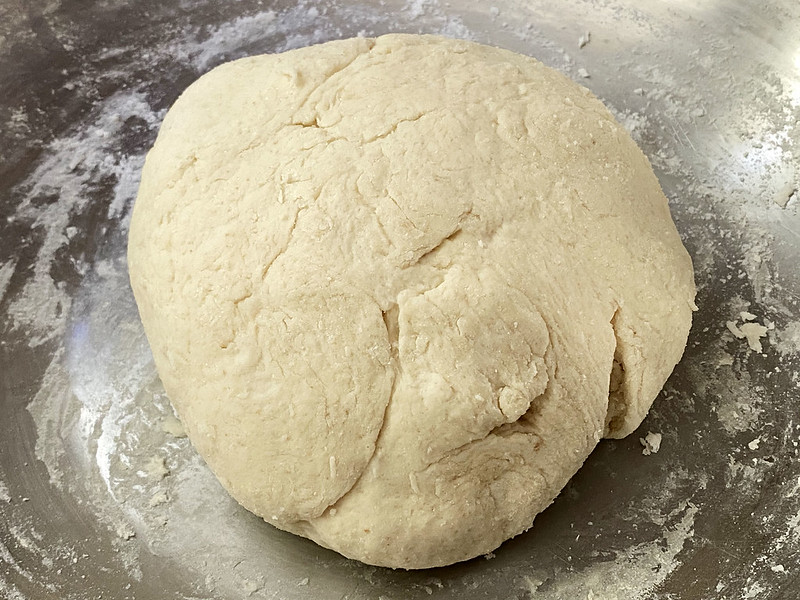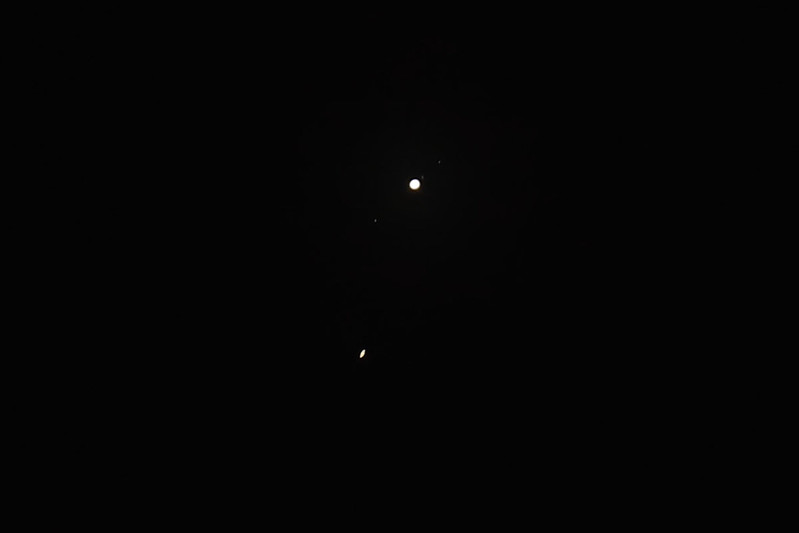This morning I began making my first sourdough loaf. I started by taking 100 grams of my new starter culture:
I added 310 mL of water, 500 g of flour, and 10 g of uniodised salt, and mixed to form a dough:
The dough seems to have a good consistency. I covered the mixing bowl in cling film and have left it to rise overnight. By this evening it’s already risen a lot, I’d say doubled in size easily. But I’ll bake it in the morning.
The other good news today is that the clouds obliterating Sydney’s view of the grand conjunction of Jupiter and Saturn for the past week finally lifted today. Only they lifted higher into the atmosphere, forming a thin haze over the sky. Nevertheless, I went out tonight with my camera to see what I could, and managed to get a few photos. Here’s the best one:
You can see Jupiter, all four Galilean moons, and Saturn. Saturn looks elongated by the rings, but you can’t really tell they’re rings. Here’s the same photo labelled:
It was a pretty crappy view, honestly. Always through cloud haze, and sometimes the planets would disappear altogether as thicker cloud wisps drifted across. But it may be the best I get, because the forecast for tomorrow is more evening rain, and then rain every day for the next week. But at least I got to see it.
New content today:





You don’t “knock down” sourdough the way you do most breads?
Apparently not, at least according to the simple recipe my friend suggested I try first. The natural yeasts aren’t as potent as commercial baking yeast, so you need to let it rise as much as possible without removing the gas.
Your photo is as close as we’ve got to seeing the conjunction. Scotland unsurprisingly is plagued by cloud cover. Seeing someone else’s view makes up for it somewhat.
My wife asked what you took the photo with – she has a degree in photography from Edinburgh College of Art, so has a professional interest in such things.
Cheers,
Graham
Canon 5D Mark IV, with an EF 100-400mm f/4.5-5.6L IS USM lens set at 400mm, f/5.6. ISO 800, 1/4 second exposure.
I should have taken some shots with lower exposure to try to get some colour in Jupiter and Saturn, but I wanted to make sure I got the moons, and didn’t have a lot of time to play with between the clouds.